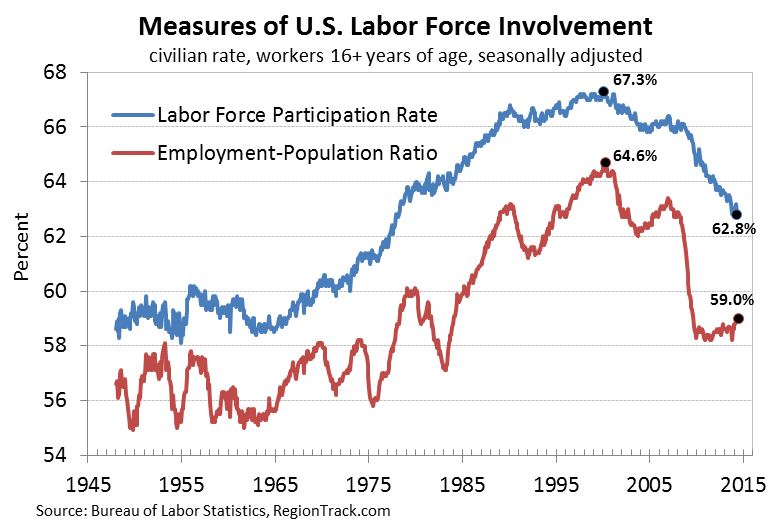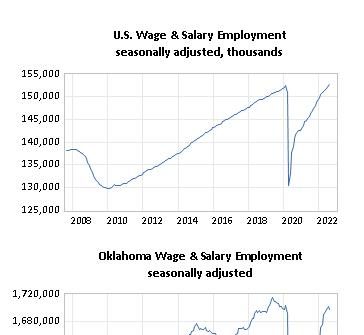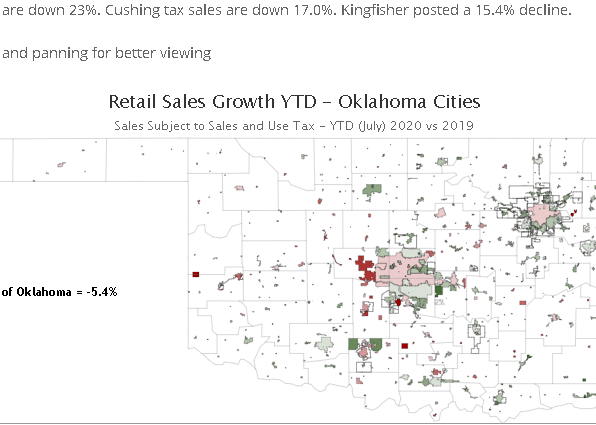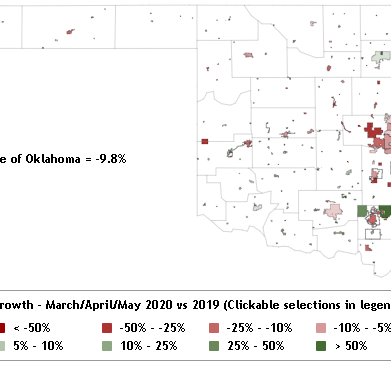Oklahoma's post-pandemic recovery has been disappointingly slow relative to the nation. The state and both major metro areas have lagged well behind the U.S. in…
Pic-of-the-Week: Watch the Employment-Population Ratio, Not the Labor Force Participation Rate (07/28/2014)
BOTTOM IN THE EMPLOYMENT-POPULATION RATIO IS ENCOURAGING. Way too much attention is paid to the labor force participation rate. It is the most commonly used measure of the level of involvement of the population in the labor force, but it is not the measure that contains the most information. That honor belongs to the employment-population ratio.
Although similar in concept, the labor force participation rate is a much smoother measure that does not capture as much of the cyclical behavior of workers entering and leaving the labor force. Conceptually, it attempts to measure the share of workers who either are employed or who desire to be employed (those deemed unemployed).
The employment-population ratio, on the other hand, measures the share of the population actually employed. As a measure of potential economic activity, the employment-population ratio is a far superior measure and the one you should follow to identify cyclical changes in labor force involvement.
This week’s pic illustrates the long-run behavior of both the labor force participation rate and the employment-population ratio since 1948. The added variability of the employment-population ratio is clearly evident. It tends to reflect the variability present in most broad measures of economic activity, as well as periods of recession and expansion.
The most recent data is especially interesting. While the labor force participation rate remains in a steep downtrend, the employment-population ratio has bottomed and is showing clear signs of an early uptrend. From a forecasting perspective, this is a very encouraging sign of improvement in the labor market.
Sign up to receive RegionTrack’s PIC OF THE WEEK!
[email_link]
[email_link]




